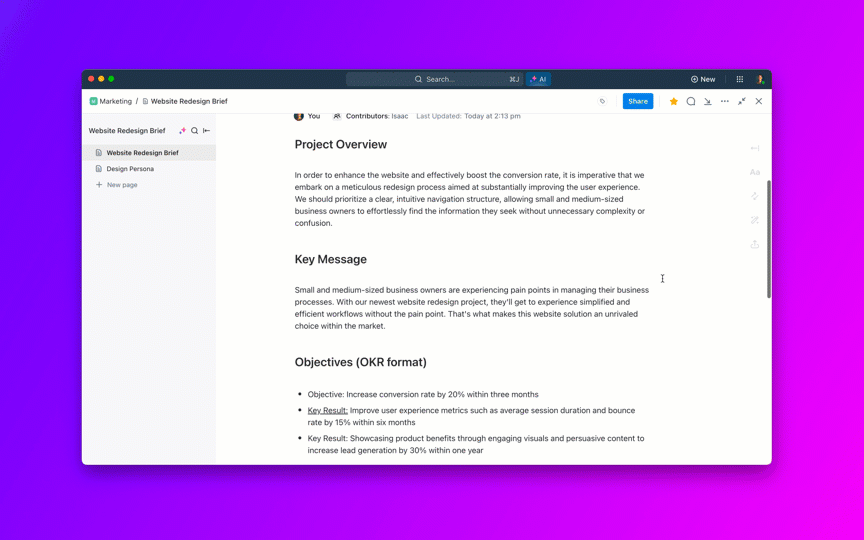Five decades ago Microsoft started with just a handful of people. Today, it employs 228,000, give or take. It’s the number 13 company on the Fortune 500. It made Bill Gates the richest man alive for many years. There is no question: The tech behemoth is doing something right. (In fact, we’ve also plummed the pages of PC Magazine, like we’ve done here, to find 10 Microsoft breakthrough products worth celebrating.)
However, no company this massive with a half-century history can escape the occasional mistake. Microsoft, like many others, has mishaps in its history it would likely prefer you forget.
The nine Microsoft products below launched to great fanfare, with buy-in from major partners, with billions spent on research and development, not to mention mergers and acquisitions. And they all ended up flopping, fizzling, or just fading away.
The Microsoft Network (1995-1998)
Defining what The Microsoft Network became is difficult. It started as direct competition to America Online (AOL), providing dial-up access and a web-based portal called Microsoft Internet Start. It came with Windows 95.
This review of The Microsoft Network appeared in the October 1995 issue of PC Magazine. (Credit: PCMag)
Microsoft was a singular juggernaut then, and one tech pundit said that the new OS, with its links to The Microsoft Network, could “kill the Internet.” PC Magazine‘s own pundit countered with “fat chance” since Microsoft’s effort was up against not just the Internet but also established online services like AOL, CompuServe, Prodigy, plus AT&T’s new Interchange (a service that was once owned by none other than Ziff Davis, the publisher of PC Magazine).
The Microsoft Network’s true goal—to be an internet killer—never materialized. It did a multimedia-heavy revamp and pushed it by handing out 3.5 million CD-ROMs to potential customers. Didn’t help. The proprietary online service (renamed MSN Classic) for a time eventually moved all its services to the World Wide Web before shuttering in 1998. (AT&T Interchange didn’t fare any better, it was also scraped in 1996 and moved to the Web; all the online services took that route eventually.)
For a time, MSN was the second most prominent name in dial-up service, right behind AOL. This isn’t saying much, as it was during this period that always-on, high-speed broadband internet became a thing. Timing is everything.
The MSN moniker is still around, having been used on everything from email to a search engine (now Bing), and still exists online today at www.msn.com. But the original online service lives on only in memory.
Microsoft Bob (1995)

(Credit: Microsoft)
Imagine the operating system of today, with its windows, file managers, and third-party apps, replaced with a cozy house and soft puppy. That was Microsoft Bob.
Launched in early 1995, just ahead of Windows 95, marketed by newlywed Melinda Gates, Bob was meant to bring computing to the masses—at least those who had not yet embraced it. Instead, it became synonymous with failure at the company. Too cutesy, too restricting, and too underpowered by the tech of the day (it required 8MB of RAM!), the critics were brutal.

PCMag’s take on Bob from March 1995. (Credit: PCMag)
PC Magazine was a bit nicer, saying, “Bob has the social skills of a Saturday morning cartoon,” but we were confused even after the demo. “Is it a user interface or an application suite?” asked editor Bill Machrone, who wrote a column (below) about how his family made fun of the name, though the headline called it a “Great Product.” No matter; Bob didn’t live out the year.

Also from March 1995, Bob’s “terrible name” turned out to be the least of its problems. (Credit: PCMag)
Some elements of Bob would continue, like Rover, the animated dog, who appeared with Clippy as a helper in Microsoft products. Perhaps the biggest sin of Bob: It directly inspired the creation of the font Comic Sans.
Microsoft Tablet PC (2001-2011)
Years before the Surface tablets and laptops became a success story, Microsoft tried its hand at tablets. In fact, the Tablet PC wasn’t its first try. But Tablet PC was a serious stab at making it work. Microsoft developed the specs and let OEMs make the hardware so that Windows for Pen Computing (an OS that goes back to 1992), then later Windows XP Tablet PC Edition, could provide the power. Partners included HP, Lenovo, Toshiba, Fujitsu, and Acer.
It could be argued that this foray into slates simply morphed, as every Windows OS has natively supported tablet screens (via pen or touch) since Windows Vista. The problem was that those Tablet PCs of the aughts were built as big and heavy as a laptop to accommodate the hardware needs of Windows, with prices usually starting around $2,000. Naturally, they didn’t sell. The “Tablet PC” name came and went, having never proved that tablets had much of a market outside niches like retail and healthcare.
That market for consumer tablets didn’t take off until the Apple iPad debuted in 2010. It sold more tablets in three months than all Tablet PC vendors combined sold during the previous two years. Apple didn’t just slap its desktop OS on a tablet—something Microsoft didn’t understand at the time. Even a year later, Tablet PCs with Windows remained “large, thick, PC-like products,” said Brooke Crothers at .
Microsoft eventually did get it. In 2012, the company introduced the Surface, using its own hardware and a smaller, hobbled version of Windows 8, at a starting price of $700. The company hasn’t looked back.
Ultra-Mobile Portable Computers (2006-2010)
Tablets weren’t working. It was time to push Windows for a wholly new platform. Microsoft kept it a secret for a while under the name Project Origami. It turned out to be ultra-small computers running full Windows but on screens smaller than 8 inches running at 800-by-480 minimum, controlled by thumb keyboards. Sometimes, the screens slid up; sometimes, a UMPC opened like a clamshell. Some just resembled small tablets.
Microsoft worked with Intel on the UMPC specs for OEMs. Companies like Asus, HTC, Samsung, Sony, and, famously, OQO, manufactured them. Microsoft was, of course, bullish. It said in 2006 that UMPCs “will eventually become as indispensable and ubiquitous as mobile phones are today.”
Our colleagues at called UMPCs the “ugly stepchild of computers.” We didn’t always hate them. Our reviewer gave the OQO Model 02 a 4-star rating in 2007 and called it “intuitive and innovative”…two years before OQO shut down. However, we did tell readers to stay away from the Samsung Q1 UMPC.

In our September 4, 2007 issue, we liked the Samsung Q1 Ultra a little better, but not by much. (Credit: PCMag)
Microsoft gave up marketing UMPCs in early 2010, gearing up to make its Surface line. A few companies tried to make UMPC-like devices even after that, some of which morphed into gaming tablets. Users of today’s Steam Deck, MSI Claw, and similar handheld game devices can look back at what UMPC wrought and be thankful.
Microsoft Zune (2006-2015)

(Credit: John Burek)
Get Our Best Stories!

What’s New Now
By clicking Sign Me Up, you confirm you are 16+ and agree to our Terms of Use and Privacy Policy.
Thanks for signing up!
Your subscription has been confirmed. Keep an eye on your inbox!
When you’re a public tech company as big as Microsoft, you’re not allowed to ignore a possible revenue stream. So even though it was years behind the Apple iPod, in 2006, Microsft released the Zune portable media player. Some were hard drive-based, and later models were flash-based. Our first review said, “If Microsoft can boost its battery life, broaden the video support, and make it easier to download podcasts, the Zune could provide some healthy competition to the iPod. Until then, the iPod will continue to reign supreme.”
There was eventually a Zune Marketplace for selling media to run on the devices, and Zune software for Windows to sync it with a desktop (ala iTunes). But by 2011, the writing was on the wall. Microsoft had come far too late to a party where iPod was the guest of honor, even as the iPhone was stealing all of iPod’s buzz. The only innovation Zune held was sharing music, which only worked with other Zune users. And there weren’t any. Zune sales never took off—it couldn’t even compete with SanDisk and Creative’s media players.

Our first look at the original Zune arrived in the January 2007 issue. (Credit: PCMag)
Microsoft stopped making the hardware in 2011. A year later even the software and stores were rebranded for Xbox users. In 2015, all streaming or downloading to the devices ceased.
Well after its demise, Zune was used as a joke in Marvel’s Guardians of the Galaxy films, when one of the first-generation brown (yes, brown) 30GB Zune models became the lead character’s music player, suitable only for replacing a Sony Walkman cassette player.
Microsoft Kin Phones (2010-2011)

(Credit: Microsoft)
It’s nice to be too big to fail. Some companies spending a billion dollars on R&D would falter, but doing so on the Kin phones was barely a blip for the company. That included buying the company Danger Inc. for $500 million; it made the once famed T-Mobile Sidekick, aka the Danger Hiptop. Microsoft used its team (until most of them quit) to work on Project Pink, the codename for the Kin phones.
The goal was to make phones geared entirely toward sharing too much about yourself on social media. They would integrate Facebook where everyone was posting. What fun! It could post to Twitter, but only text. Despite the fact that both models had a camera.
What a disaster. The two Kin phones—dubbed Kin One and Kin Two like high-tech Suess characters—ran Windows CE and had physical keyboards hidden under the slide-up screens. They were to be sold exclusively in Verizon Wireless stores. But no one was buying a $70 per month phone that didn’t run apps or games or even send a message. PC Magazine called it “underpowered” in our review. They sold so badly that Verizon stopped trying after only 48 days.
Recommended by Our Editors
Eventually, the hardware was re-released and updated to act like a regular phone, but that move was made to blow through the existing inventory and move on. The write-off to get rid of the Kin was $240 million—almost half of what it cost to buy Danger in the first place.
Windows Phone (2010-2020)

(Credit: Micrsoft/Nokia)
When the Zune, Windows Mobile, and Pocket PC were all on their way out—largely because of the success of the iPhone—Microsoft took one last stab at conquering the consumer mobile slab-phone space. Launched in 2010, Windows Phone 7 (so-called because Windows 7 was the current desktop version) had the same“Metro” design of big blocks for icons. It had no backward compatibility with Windows Mobile or other Microsoft OSes.
Much of Windows Phone’s life is intertwined with that of Nokia, the main (but not only) phone manufacturer using the platform. So much so that Microsoft eventually spent $7 billion to acquire Nokia’s entire mobile phone division and renamed the group “Microsoft Mobile.” Talk about synergy. Eventually upgrades for the OS saw the addition of tech like Cortana (below), Continuum so you could use the phone like a desktop system on a big monitor, and Universal Windows Apps that would run on multiple devices like the phone, desktop, even the Xbox.
It didn’t matter. Interest waned—especially from app developers in love with iOS and Android. No apps kills a platform fast. Microsoft was actively done with Windows Phone (and the OS, Windows 10 Mobile) by 2017. Microsoft CEO Satya Nadella still considers giving it up one of his biggest mistakes.
Cortana (2014-2023)

(Credit: Microsoft)
Cortana’s name comes from the helpful AI character accompanying Master Chief throughout the Halo games, starting with 2001’s Halo: Combat Evolved. When Microsoft decided to enter the virtual audio assistant business—taking on Amazon’s Alexa or Apple’s Siri—it used Cortana as a codename but eventually made it official. It got Jen Taylor, the voice of the AI in the games (and the Halo TV show), to spend hours in a studio recording every sound possible to become the official and only voice for Cortana the assistant (at least in the US).
Cortana debuted on the Windows Phone platform, then migrated to Windows 10, Xbox One, the Edge browser, Teams, Skype, even iPhone and, oddly, Alexa—the latter being so weird that when it killed the integration, no one noticed. No one really noticed Cortana much at all, despite the cool voice. It never made it to a smart speaker, where it belonged.
Satya Nadella said in 2019 that Cortana wasn’t a competitor against Alexa or Google Assistant, more of a helper for Microsoft platforms. It was help no one wanted, or maybe it just wasn’t as good as what is available today.
Microsoft began inexorably yanking Cortana out of all the platforms on which it was available. The arrival of Copilot in everything Microsoft was the final nail in the virtual coffin. By 2024, updating Windows removed Cortana entirely.
HoloLens (2016-2028)

(Credit: Microsoft)
In keeping with Microsoft’s desire to always try and keep up with the competition, the company took one look at the Oculus Rift VR headset and said, How hard can it be?
To Microsoft’s credit, it knocked it out of the park at first. As early as 2015, it was wowing people with a HoloLens hologram show at its Build conference. HoloLens 1 came out in 2016. We tried it several times that year, finding that with each test, it performed better. Version 2 shipped in 2019. We called it a game-changer and said it was the most amazing thing at Mobile World Congress in 2019 that year. The price was $3,500.

 Microsoft’s HoloLens 2 Is a Huge Leap Forward for Augmented Reality
Microsoft’s HoloLens 2 Is a Huge Leap Forward for Augmented Reality
It was also hard to wear since it was a full Windows PC attached to glasses. Microsoft also had to deal with a patent lawsuit over HoloLens during its time. The HoloLens lead left the company amid misconduct allegations. But perhaps the biggest downfall was marketing the HoloLens more for business than consumers. Microsoft should have gone after the Xbox crowd.
Production ceased in late 2024. All support for HoloLens 2 ends in 2028. The tech may live on in a contract Microsoft has with the US Department of Defense, but it’ll hardly be the HoloLens we knew.
For more, check out sibling site ZDNet’s Microsoft 50th Anniversary retrospective.
About Eric Griffith
Senior Editor, Features










